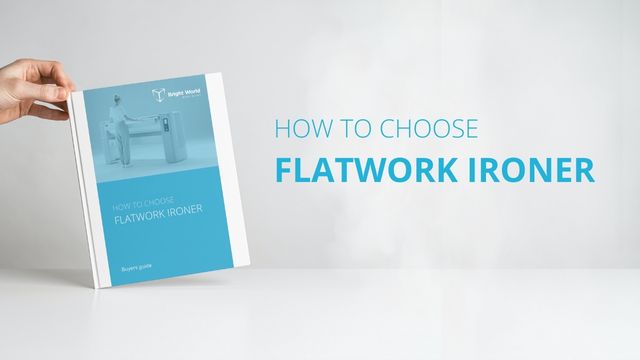If choosing professional equipment for your business creates more questions than answers, you are at the right place. We have prepared a guide with all the essential information when it comes to choosing the best ironer for your business.
From the start, you need to know that flatwork ironers are exclusively intended for flat laundry such as sheets, bedspreads, pillowcases, cloths, napkins, and tablecloths. etc. Working on this kind of equipment is quite simple. The ironer is started by pressing the foot pedal and the laundry is placed in the space in front of the ironer. The laundry is inserted between the ironer and the drum, and the heated ironer presses and pulls it in. On the second part of the ironer or on the storage space, a flattened piece of laundry emerges.
If enormous amounts of laundry are part of your daily routine and it takes up your precious time, ironers are your ideal partner. They are faster and stronger than regular ironing devices and they have a warranty for commercial use.
Stay with us and get to know the types of flatwork ironers.
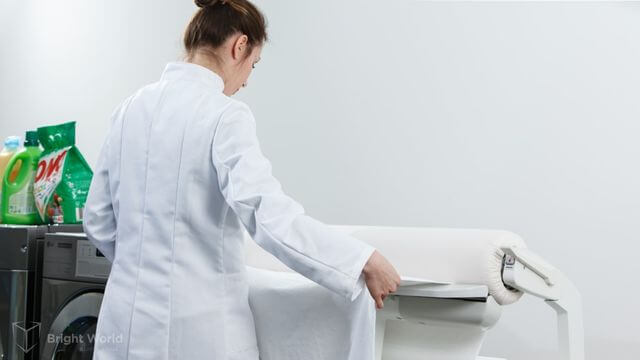
Types of ironers
There are three basic types of ironers. They primarily differ according to purpose:
- Household ironer
- Professional ironer
- Industrial / Commercial ironer
As the name suggests, household ironers are intended exclusively for household use. Sometimes they are (ab)used in laundromats, which is actually a bad idea. The reasons are quite simple - household appliances aren't designed for working conditions in laundromats, such as long-term work without a cool-down phase. If they are used for professional purposes, they lose the warranty. It is important to know that household ironers do not comply with the provisions of labor protection.
Professional ironers are devices ideal for smaller amounts of laundry (up to 30 kg of laundry per day). Due to their features, they are perfectly suited to smaller businesses such as renting apartments or in restaurants. They are slower than industrial ones, but their advantage is their small dimensions and the possibility of fold when not in use. A big plus is that professional ironers are more affordable.
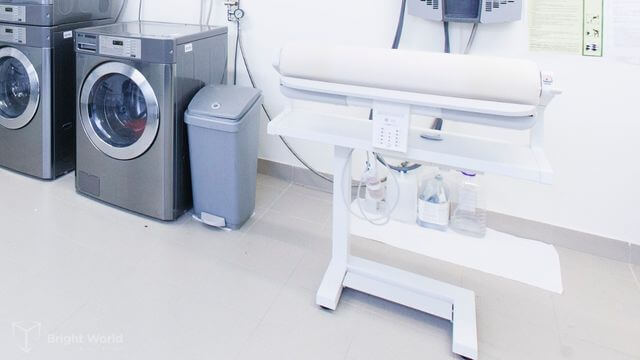
CLICK FOR DETAILS - PROFESSIONAL IRONER
Industrial flatwork ironers are the real stars among these devices. These are professional working machines that ideally fit into any serious laundry. They are efficient because they quickly and easily straighten even the more demanding fabrics. Robust design, resistance to high temperatures, and wear ensure their durability even after four thousand hours of ironing. They are usually larger in size and cannot be folded, but that is why they have the option of returning the laundry to the front, which means that you can place them against the wall and thus save space. Industrial ironers can boast with a wide selection of programs, which means that they can adapt perfectly to all types of fabrics. These devices are more expensive, but profitable in the long run.
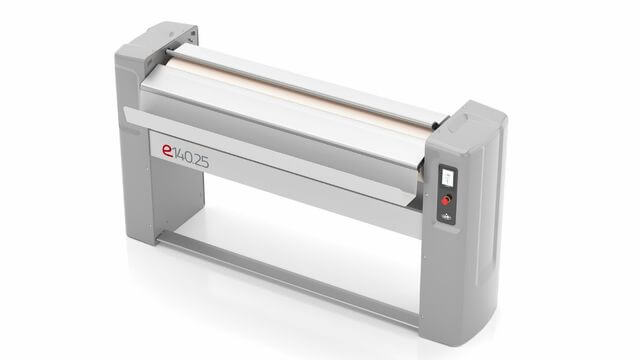
CLICK FOR DETAILS - INDUSTRIAL IRONER
Criteria for choosing the right type of ironer
Now that you know the difference between types of ironers, we can answer the main question in this story - how to choose the ideal ironer for your business? Although the final choice depends on many factors, stay with us, and find out below everything you need to know before buying an ironer.
Purpose of the ironer
Which type of ironer you will choose primarily depends on the purpose for which you will use it and the capacity you need:
- Do you use the ironer for your own needs of ironing bed linen that does not exceed, for example, 30 kilograms per day? The capacity of the smaller ironer is ideal for you.
- Ironing service - Do you offer ironing services to other clients? You need an industrial ironer because it saves you time and increases the number of clients you can receive, and thus your earnings. Ironing on smaller ironers takes more time, they are not ideal for wide items, so ironing would be too slow.
Width of the working surface
Another important item is the width of the work surface. The calculation is simple: How wide is the widest laundry that you will process - that should be the width of the working surface of the ironer. Don't forget that pieces of laundry, e.g. sheets for queen size beds, can be folded in half and ironed that way.
! Bonus tip: Plan if there will be one or more people operating on the ironer at the same time. If only one person is ironing, the width should not exceed 140 centimeters, as this corresponds to the average span of human arms. Otherwise, there could be problems with correctly inserting laundry and the results could be creases or deformation of the fabric.
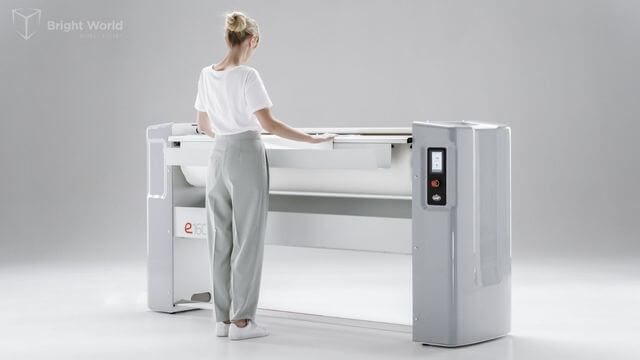
In addition to the width of the working surface, the diameter of the ironer itself is also important. The diameter is what gives a better final result. The larger it is, the more pressure is applied on the laundry and the longer the fabric is in contact with the surface of the ironer. All this results in faster processing and better moisture removal.
Heating source
The options you have available as a source of heating for the ironer also plays a vital role. Is it electricity, gas, or steam?
Electric ironers use electricity to heat up the ironer and make it work. They are also the most common choice of users due to the easy installation. The only thing you need to check before choosing is whether you have single-phase or three-phase electricity on the premises and whether you have enough kilowatts leased to work with other laundry appliances.
If there are conditions for it, an alternative to electric ironers are gas flatwork ironers. Compared to electric ones, there is no difference in the way the ironers work. What differentiates them is the installation, because it is important to choose whether you want to connect it to the city gas or the natural gas tank. In both cases, it is important to plan that a gas installer must be engaged during the preparation of the installation and installation, which represents an additional cost.
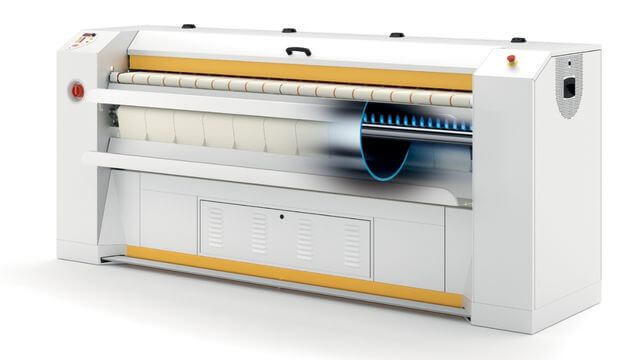
The last (and rare option) is steam - boilers that generate steam and use it to heat the ironer. This heating source is most often used in large systems such as hospitals and government institutions.
Other equipment
As ironing is the last part of the laundry processing process, it is important to match its performance with the rest of the laundry equipment. Consider all the machines you have in your laundromat and consider whether initial costs or time are more important to your business. But what does that really mean?
Most ironers require that the laundry have a certain percentage of moisture before it can enter the ironer. This means that you will need to dry it in the dryer before it can be transferred to the ironing phase. This is especially important if you have a professional washing machine with a low to moderate spin speed because you will spend some time drying.
But, in some industrial ironers, laundry can be placed in the ironer directly from the washing machine, i.e. these ironers have the option of drying and ironing at the same time. This eliminates the need to dry clothes in a dryer, but they are more expensive than the regular ones.
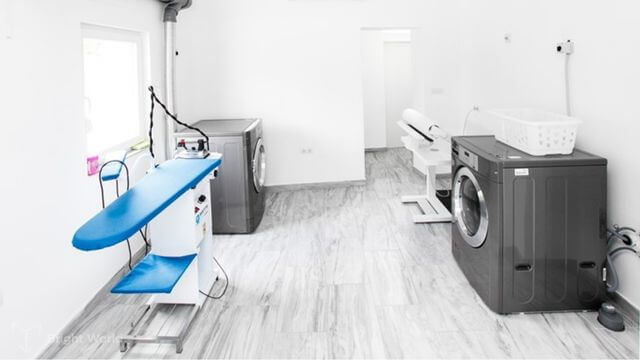
Price
When starting the laundry business, the main obstacle to buying professional ironers is their price. That's why household or used ironers are used as replacements, but unfortunately, such purchase turns out to be the most expensive in the end.
Used ironers don’t have a warranty for commercial activity or it expired long ago. They are often bought outside of the local market, so it is difficult to find authorized service providers, and due to their age, finding spare parts such as canvas for the ironer or filters is a huge problem.
The ironer is not a machine that you buy for “single-use”, so it is good to weigh the cost and assess future needs. Once the business starts, it may be too late when you realize that you’ve bought a device that doesn’t suit you.
That's why it's important to talk to experts before, to make sure your business requirements are met and secured.
Our team is an address where you will receive answers to all additional questions, professional advice, and maximum support. Contact us and find the ideal device for your laundry in a few simple steps.


